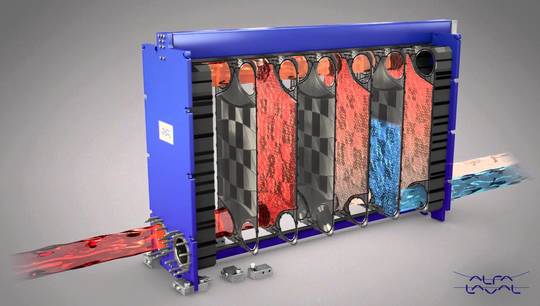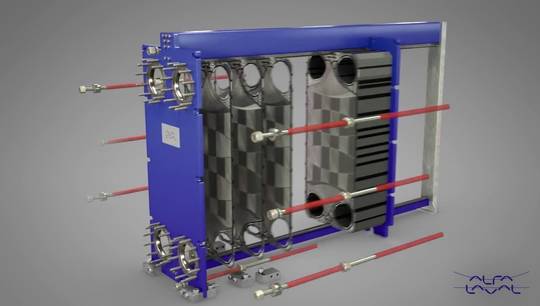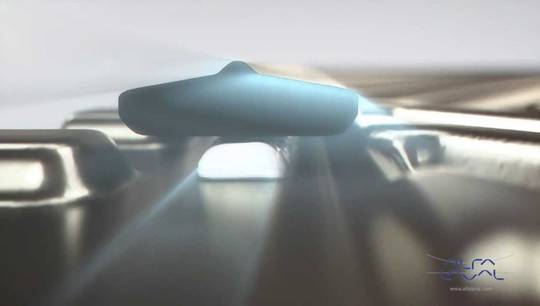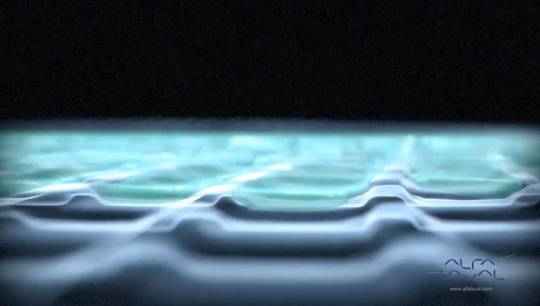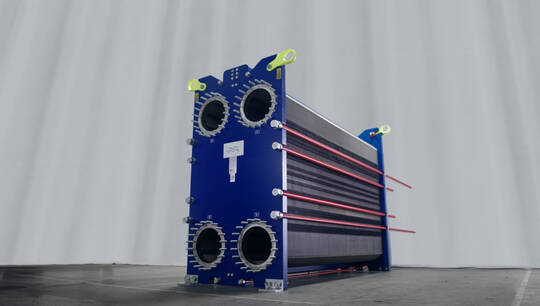Gasketed plate heat exchangers
Alfa Laval liquid/liquid gasketed plate-and-frame heat exchanger
23,212 views
As the fluids pass through the heat exchanger, heat is transferred from the hot media to the cold media. Counter current flow enables maximum heat recovery possibilities and very close temperature approach can be achieved. Temperature cross is also possible, meaning that the hot outlet can reach a lower temperature than the cold outlet. This can only be achieved to a limited extent with tubular heat exchangers making plate-and-frame heat exchangers more thermally efficient.
The fluids enter through the connections and portholes of the heat transfer plates. Specially designed sealing gaskets located between the plates direct the fluids so that the hot and cold fluids pass counter-currently in alternating channels. When the fluid enters between the plates, it passes over the distribution area. Alfa Laval offers two types of distribution areas: our patented CurveFlowTM and the chocolate pattern. Alfa Laval’s well-designed distribution area is one of the most important features of a plate heat exchanger. Its main purpose is to ensure an even flow of fluid over the entire plate while maximizing heat transfer efficiency and minimizing maldistribution and fouling. In the animation you can see that the distribution area helps the fluids to quickly fill up the entire cross section of the plates.
For very heat sensitive media, co-current flow is used in gasketed plate-and-frame heat exchangers. The benefit with this design is that the coldest fluid meets the hottest fluid when entering the heat exchanger, minimizing the risk of overheating or freezing sensitive media. In the animation you can imagine that the hot fluid is reversed, so that both fluids are entering at the bottom connections.
The animation shows the working principle of a conventional gasketed plate-and-frame heat exchanger, but the same working principle is applicable also to specialized ranges such as our semi-welded and WideGap plate heat exchangers.
Alfa Laval has an extremely broad range of gasketed plate-and-frame heat exchangers which are used in all types of industries. The number of sizes, plate and gasket materials and available options are enormous.
